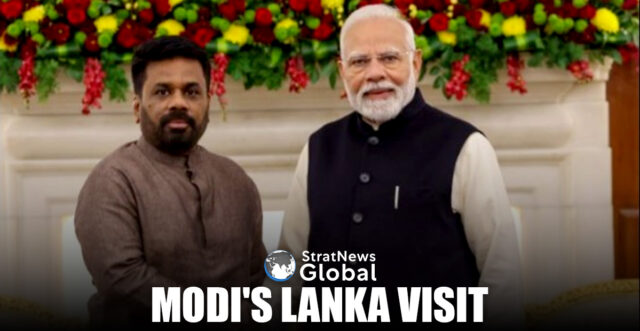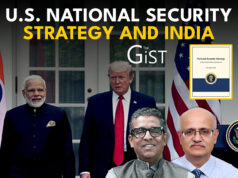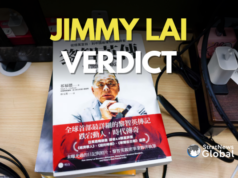Indian Prime Minister Narendra Modi is set to visit Sri Lanka from April 4-6, marking his first visit to the island nation in several years. A lot has changed since his last visit in 2019—particularly for India.
In the past few years, India has surged ahead economically, adding a staggering $1 trillion to its GDP. Its road network has expanded to an impressive 6.7 million km, making it the largest in the world. The Indian middle class has grown from 400 million to 550 million, and multidimensional poverty has plummeted from 300 million to just 72 million. And it has consistently been the world’s fastest-growing economy for several years now.
Yet, despite these strides, Sri Lanka—one of India’s closest neighbours—has not fully capitalised on this economic boom.
India and Sri Lanka share a long economic history. India’s first-ever Free Trade Agreement (FTA) was signed with Sri Lanka in 1998 and came into effect in 2000. However, trade statistics tell a sobering story. In 2023, India’s exports to Sri Lanka stood at $3.62 billion, down from $4.67 billion in 2018—an annualised decline of 4.93%. Meanwhile, Sri Lanka’s exports to India declined at a rate of 5.63% annually over the same period, falling from $1.32 billion in 2018 to $991 million in 2023.
Investment and tourism figures further highlight missed opportunities. Indian companies invested $36 billion globally, but only $1.2 billion in Sri Lanka. While 30 million Indian tourists traveled worldwide in 2024, only 450,000 visited Sri Lanka—though this remains the highest number from any one country.
Clearly, the economic potential between the two nations remains underutilized.
From a geopolitical standpoint, India, under Prime Minister Modi and External Affairs Minister S. Jaishankar, has adeptly navigated a rapidly shifting global landscape. By maintaining a balanced stance on the Russia-Ukraine conflict—refusing to condemn Moscow outright while firmly stating that “this is not the era for war”—India has emerged as a credible and respected global player.
With non-alignment giving way to multi-alignment, Modi’s leadership has positioned India as a force to reckon with. Even as the world grapples with the return of Trump-style politics, Modi’s statesmanship has earned admiration and trust across the globe. India’s active role in both the Quad and BRICS signals its influence in shaping the evolving global order. More importantly, it continues to be a powerful representative of the Global South.
This unique positioning makes India an essential buffer for Colombo—both economically and geopolitically. The real question is: Will Sri Lanka embrace India as a true partner?
During Sri Lanka’s economic crisis in 2021, India was the first to extend help—swiftly and generously. India not only provided immediate relief but also played a crucial role in reassuring the IMF, facilitating much-needed financial assistance. The Indian High Commissioner at the time aptly reframed the narrative, shifting from the often-contested “big brother” label to “civilizational twin”—a term that underscored the equal status and deep historical ties between the two nations.
Now, as Modi visits Sri Lanka, the stage is set for a historic shift. Could this be the moment when the two nations finally move beyond hesitation and skepticism to become true economic and strategic allies? Much depends on how Sri Lanka chooses to respond.
Here’s some steps Sri Lanka must take to harness India’s economic dividend:
1. Shed Historical Baggage : The India-Sri Lanka relationship is often held hostage by the past—memories of Chola invasions, the civil war, and India’s perceived role in it. While India has actively worked to rebuild trust, a lingering sense of suspicion remains in Sri Lanka. Now is the time to shed historical anxieties and fully embrace India as a natural partner for growth and prosperity. Balancing India against other powers has only resulted in lost opportunities.
2. Seize The Trade Opportunity: On April 2, the world will see the impact of the U.S. reciprocal tariff gambit. For Sri Lanka—whose major exports are to the U.S.—this could spell trouble. With 2028 debt repayments looming, a drop in FDI could be catastrophic. Now is the time to forge a trade deal with the economic giant next door. The Economic and Technology Cooperation Agreement (ETCA) must be signed without delay. Given the current geopolitical climate, India is likely to offer an agreement that is disproportionately favorable to Sri Lanka. Will Sri Lanka seize the moment?
3. Align With A Pragmatic Vision: Sri Lanka’s new government has risen to power on a platform of change, demonstrating both pragmatism and a commitment to stability. By signaling “continuity with change,” it has positioned itself to make structural reforms. Modi’s visit presents an opportunity to recalibrate Sri Lanka’s engagement with India. Will Sri Lanka take this chance to signal its sincerity and intent?
4. Connectivity is Key: Sri Lanka must enhance its connectivity with India—digitally, in energy security, and through seamless market access. Infrastructure projects such as a land bridge between the two countries have been debated for years. AI estimates suggest that if initiated now, a land link could be operational by 2037—coinciding with India’s projected rise to a $14-15 trillion economy and its ascent as the world’s third-largest economy.
If today’s leaders have the vision and courage to act, Sri Lanka could reclaim its historical role as a gateway to global trade, leveraging its proximity to India for unprecedented economic opportunities.
If Sri Lanka takes these bold steps, it will mark the beginning of a new chapter in its relationship with India, and future generations could look back at this moment as the turning point that set the stage for an economic renaissance.
Modi is known for his warm embraces with world leaders he considers close allies. The question remains—will Sri Lankan President AKD hug Modi? More importantly, will Sri Lanka embrace India with the same warmth?
One can only hope it does. The time has come for these two civilisational twins to embrace their shared destiny and unlock their full potential—together.
Santosh Menon is the President of Lanka India Business Association- LIBA and can be reached at president@liba.lk
For more information on LIBA go to www.liba.lk





